Philips OLED769 is the entry-level OLED model from the Dutch manufacturer for 2024, but don't let that mislead you. OLED769 surprises with its image quality and several interesting features. Thanks to OLED technology, the colours are truly vibrant, and the contrast is very good – deep blacks and bright lights displayed on this screen make a difference, especially when watching evening series. When it comes to motion fluidity, OLED769 performs really well. The 120 Hz panel handles dynamic scenes excellently, whether it's sports or gaming. When playing on consoles, the TV doesn’t disappoint either – 4 HDMI 2.1 ports support VRR and ALLM, and the fast response time ensures smooth and responsive gameplay. And what about Ambilight? It's a classic Philips feature and one of those functions that either gets loved or hated. In this model, it works very well – the backlighting responds to the content on the screen and adds ambience, especially in a dark room. It's not something everyone will consider essential, but it makes an impression in the evenings – at least on us. As for the new TitanOS operating system, it leaves us with mixed feelings. It runs quickly, but it lacks some popular applications. More demanding users may miss the flexibility that previous Philips systems (GoogleTV) offered. Philips OLED769 is a good choice for those looking for a TV with beautiful picture quality and the unique addition of Ambilight. The image quality and motion fluidity will satisfy most users, and the minor limitations of the operating system won't be a hurdle if you're focusing on basic apps. It's a solid option for both watching movies and playing games.
- Matching (Score)
- Our verdict
- TV appearance
- Where to buy
- Contrast and black detail
- HDR effect quality
- Factory color reproduction
- Color reproduction after calibration
- Smoothness of tonal transitions
- Image scaling and smoothness of tonal transitions
- Blur and motion smoothness
- Console compatibility and gaming features
- Input lag
- Compatibility with PC
- Viewing angles
- TV efficiency during daytime
- Details about the matrix
- TV features
- Apps
- Playing files from USB
- Sound
Philips OLED769 vs TCL C7K / QM7K
Direct compare
OLED769 / AMIBLIGHT TV
C7K / Q7C / MQLED85K / C79K / C71K / QM7K

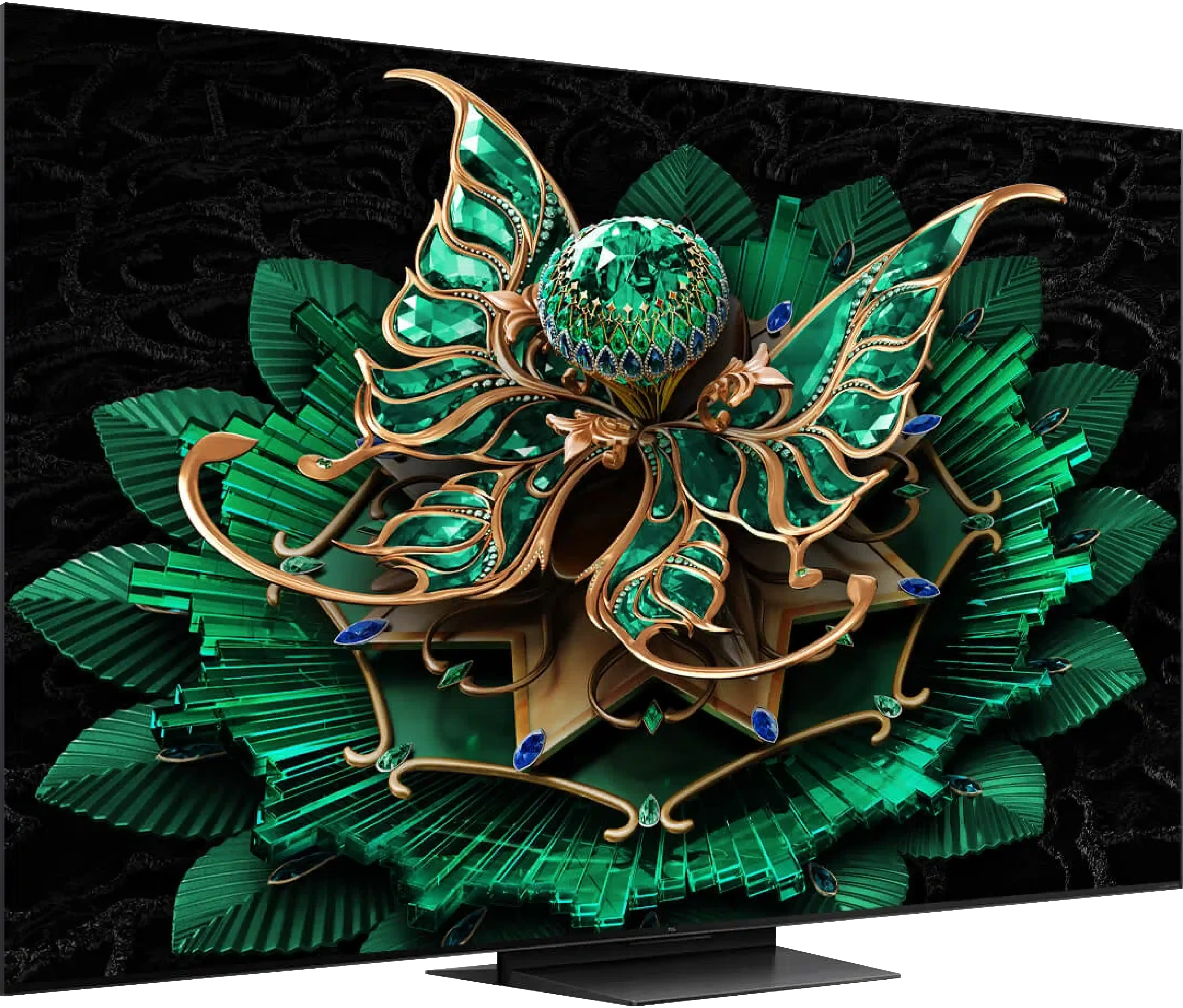
Panel type: WRGB OLED
Resolution: 3840x2160
System: Titan OS
Model year: 2024
Complete the survey to find out the result

Panel type: LCD VA
Resolution: 3840x2160
System: Google TV
Model year: 2025
Complete the survey to find out the result

Overall rating
7.3
7.1
Movies and series in UHD quality
7.7
6.7
Classic TV, YouTube
8.4
6.5
Sports broadcasts (TV and apps)
8.3
6.4
Gaming on console
9.2
8.5
TV as a computer monitor
7.6
8.4
Watching in bright light
4.6
6.1
Utility functions
5.5
7.7
Apps
6.2
9.6
Sound quality
6.7
7.0
Complete the survey to find out what fits your preferences
Advantages
Great contrast
Ideal choice for gamers and sports - HDMI 2.1, 120Hz, low input lag
3-sided Ambilight system
Excellent colour reproduction after calibration
Very good black - VA panel with a large number of Mini-LED zones
High brightness in HDR - over 1000 nits
Great for gamers - HDMI 2.1, low input lag, VRR, ALLM etc.
Good motion fluidity - 144Hz panel
Support for multiple HDR formats: HDR10, HDR10+, Dolby Vision
Google TV operating system with access to a huge app base
Pleasant sound from built-in speakers
Disadvantages
Poorly developed operating system - TitanOS
Average brightness
Google TV can have minor stutters
No USB recording and PiP function
Our verdict
There are TVs that come for testing, and you immediately think: "oh, just another average one, probably like many others." And essentially... that's true. The TCL C7K doesn't try to dethrone OLEDs, nor does it scream "revolution!" from the box. And yet, after a few days of testing, it's hard not to think: "wow, this is really good gear." And that's exactly what the C7K is. The biggest advantage of the C7K is the decent picture at a reasonable price – MiniLED and quantum dots do their job here. The colours are vibrant, the brightness is satisfactory, the contrast impresses, and with the right settings, you can truly enjoy viewing in the best quality. The second strong point is motion smoothness – both in sports and gaming. Support for HDMI 2.1, variable refresh rate, 144 Hz, and a whole heap of other features makes gaming on this TV a pure pleasure. On top of that, there's Google TV, which – despite some minor shortcomings – offers access to almost an endless library of apps. Voice control, quick access to YouTube, Netflix, AirPlay support – it has everything you need for daily use. Are there downsides? Of course. The Google TV system can have moments of "hesitation," and MiniLED – like any MiniLED – can stumble on very challenging movie scenes. But these are details. After all, the C7K is a mid-range model – and in this class, it performs remarkably well. So if you’re looking for a reasonably priced, modern TV with Google TV that looks good, works well, and sounds pretty decent without breaking the bank – the TCL C7K definitely deserves your attention.
TV appearance

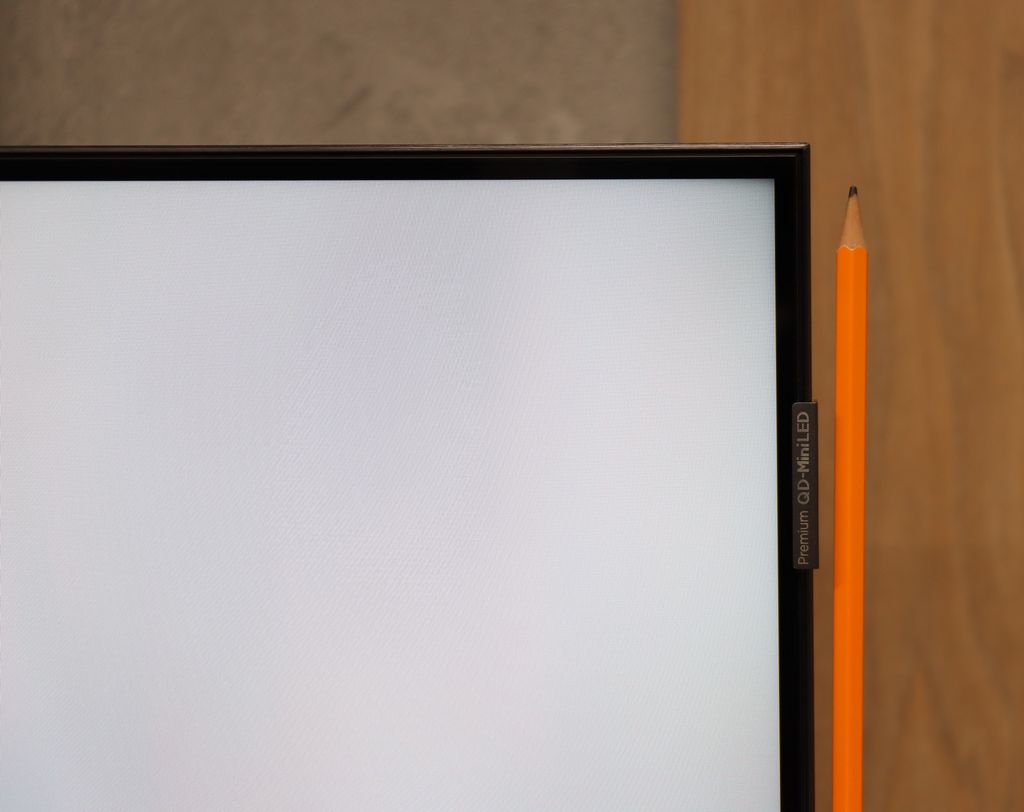
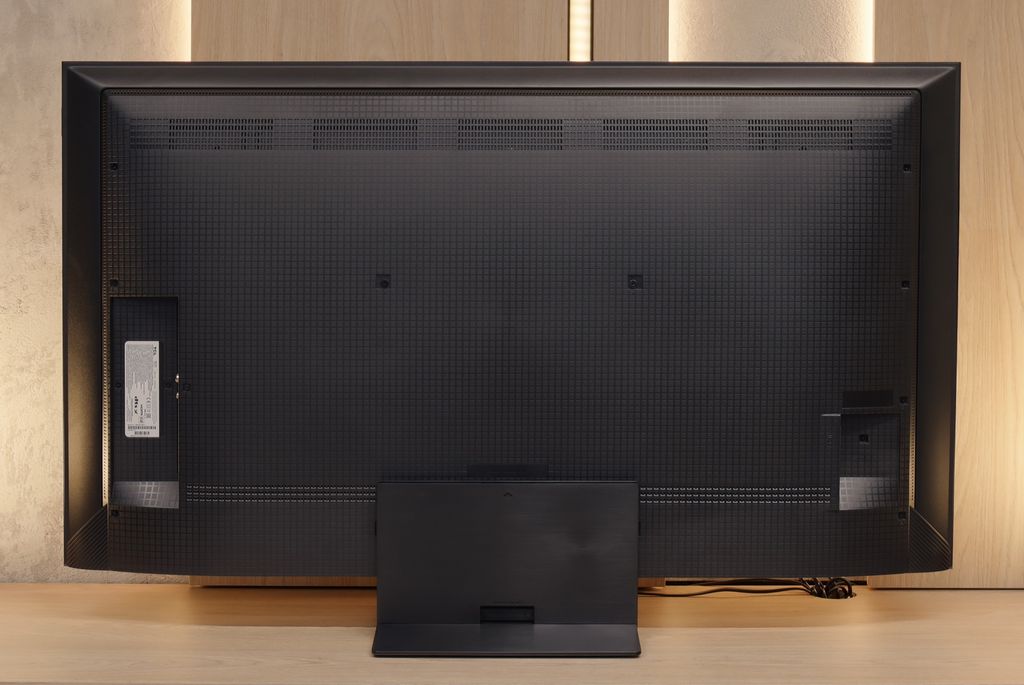
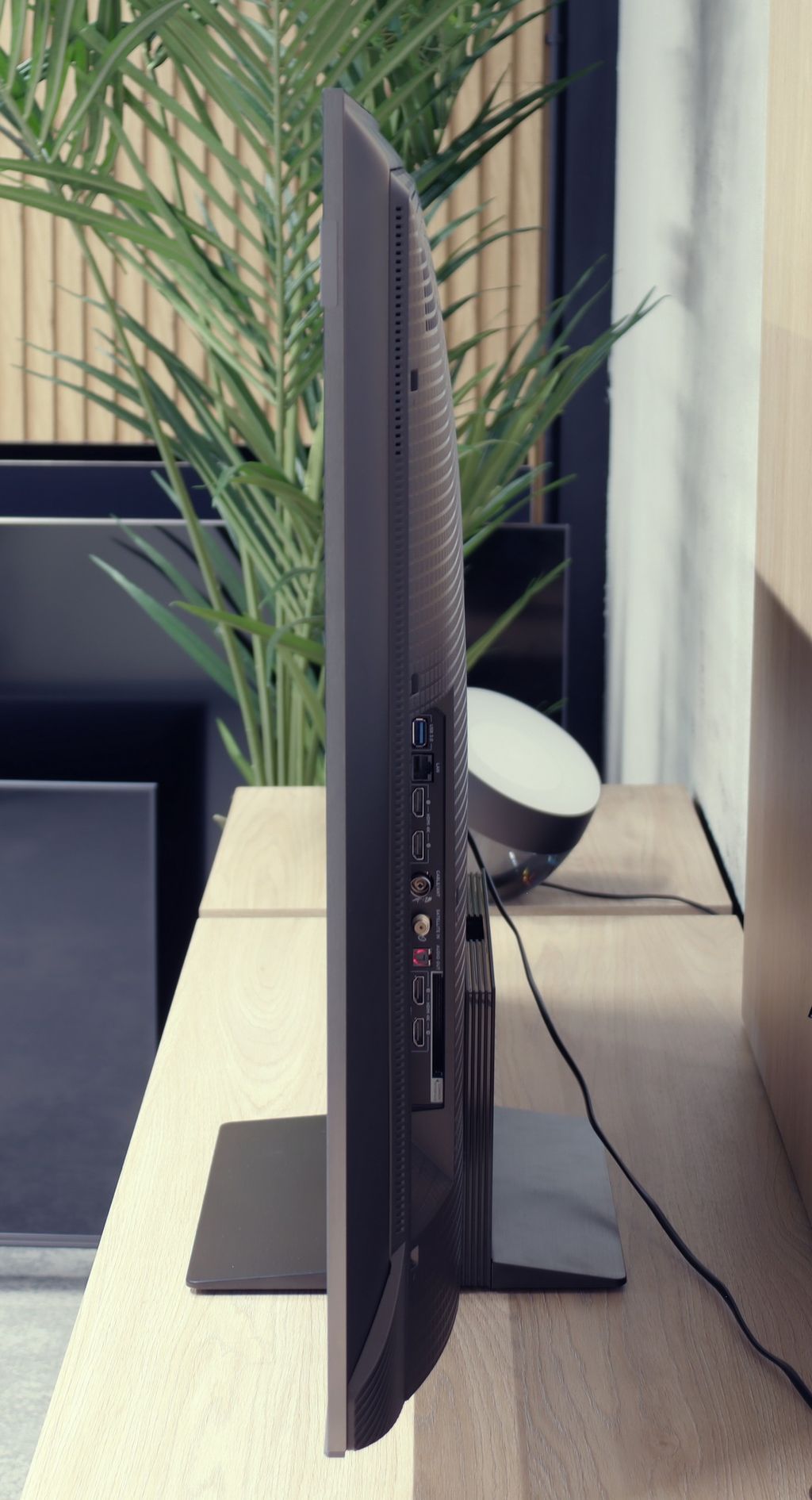
Contrast and black detail
10/10
7.1/10
Local dimming function: Yes, number of zones: 336 (14 x 24)
Contrast:

Result
∞:1

Result
∞:1

Result
∞:1

Result
∞:1

Result
∞:1

Result
161,000:1

Result
18,750:1

Result
13,150:1

Result
6,300:1

Result
4,200:1
Halo effect and black detail visibility:

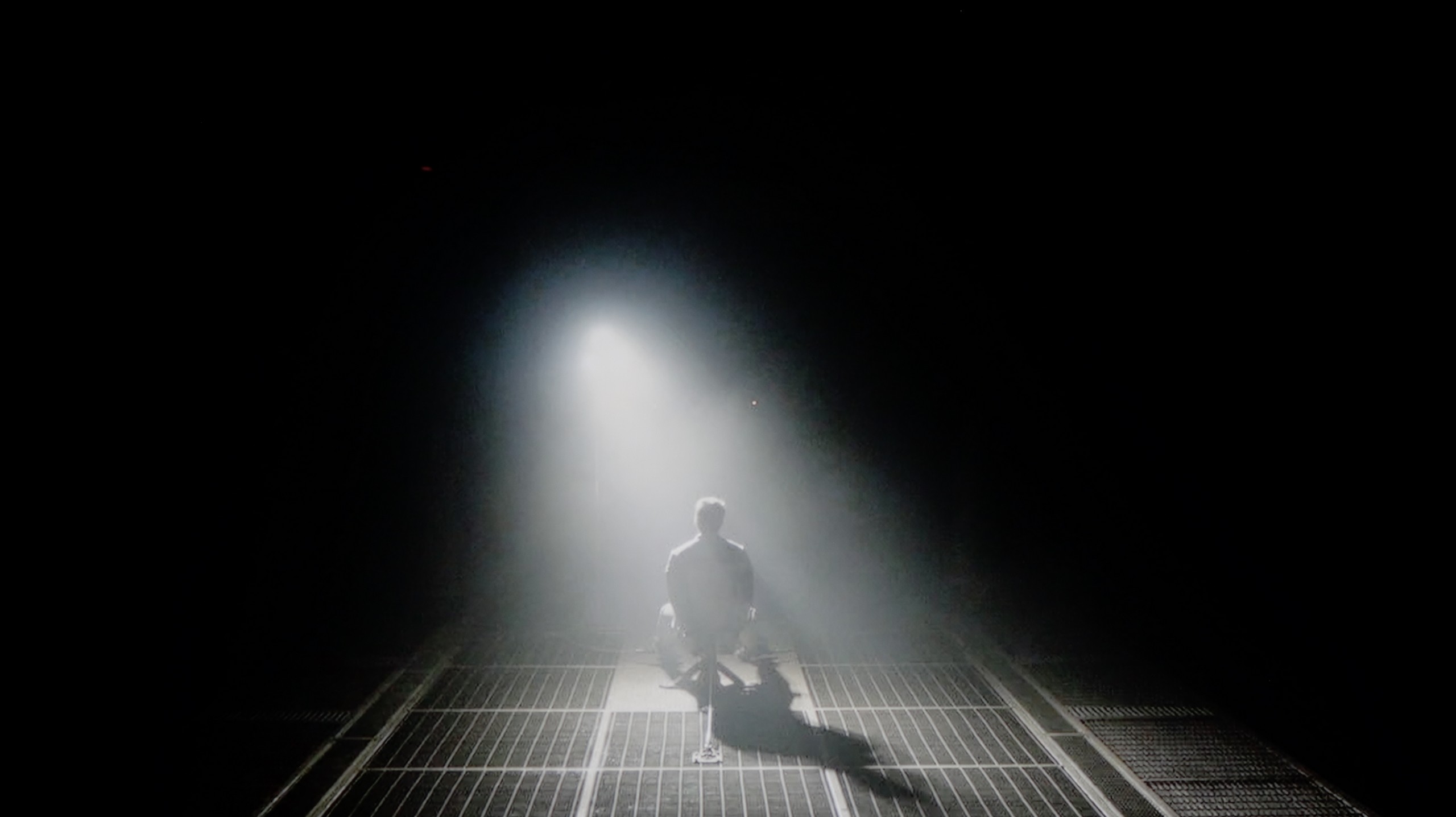
Philips OLED769 amaze with its black and contrast quality. Thanks to OLED technology, each pixel in this television is self-illuminating, allowing for complete shutdown of individual pixels. This means that black areas of the image are perfectly black, and the contrast is infinite. The effect is incredibly realistic, with excellent clarity and detail in dark scenes. The OLED panel used in Philips OLED769 is produced by LG, known as WOLED, ensuring the highest quality in black reproduction. As a result, the television offers contrast that is unattainable for traditional LCD televisions - even the best ones on the market.
The 50-inch TCL C7K we tested surprised us right from the start – it's the smallest model in the series, yet it's equipped with a VA panel with MiniLED backlighting and – get this – as many as 336 dimming zones. By comparison, many far larger TVs from higher tiers would be happy to boast such a number. Here we have it in a 50-inch version. Sounds promising, right? So how does this translate into real viewing experiences? In the overwhelming majority of tested scenes – very well. The contrast was high enough that in measurements it reached even six-figure values, which in practice means very deep blacks and well-separated highlights. In scenes from films like The Revenant or Oblivion, the effect was impressive, matching the best LCD screens in this class.
Not everything, however, went perfectly. Despite the impressive number of zones, managing them wasn't always exemplary. In more complex scenes, where small light sources or a high level of detail appear, the TV had issues with the so-called halo effect (a glowing aura around bright objects) or overly aggressive dimming of the image. In such situations, contrast could either collapse due to overexposure of some zones or, conversely – details in bright areas vanished because the zones were suppressing light too much. Nevertheless, it's worth emphasising that in the vast majority of scenes the contrast was more than satisfactory. And considering the size of the TV and the price, the final effect will satisfy not only average users.
HDR effect quality
6.1/10
5.4/10
Luminance measurements in HDR:

Result
609 nit

Result
707 nit

Result
801 nit

Result
775 nit

Result
261 nit

Result
1051 nit

Result
185 nit

Result
454 nit

Result
200 nit

Result
836 nit
Scene from the movie “Pan” (about 2800 nits)


Scene from the movie “Billy Lynn” (about 1100 nits)


Static HDR10


Dynamic: Dolby Vision
Dynamic: Dolby Vision


HDR luminance chart:
TCL C7K / QM7K
Luminancja HDR
Luminance of RGB colors
Philips OLED769
Luminancja HDR
Luminance of RGB colors
Philips OLED769 performs quite well, especially in movie scenes with small light points. The television surprises with its brightness, reaching around 800 nits, which is an impressive result. This means that small light sources, like street lamps at night or stars in the sky, are vivid and full of detail. However, the biggest challenge for this model is the scene with a full-screen sun glare. In such moments, the brightness drops to around 250 nits, which isn’t very impressive. This is a typical issue with cheaper OLED displays, which struggle to maintain high brightness across the entire screen.
TCL C7K is one of the brightest MiniLED TVs in its price class. Under optimal testing conditions, the screen can achieve over 1200 nits, resulting in impressive, at times dazzlingly bright scenes. And most importantly – this isn’t just a theory from measurements. In practice, even the brightest moments in movies can shine with true cinematic grandeur. Home HDR cinema fans should be really pleased.
The impression is fantastic, especially in scenes with large areas of brightness – a white sky, explosions, sun reflections, or magical sunsets can surprise with an intensity of light that rarely appears in this price range.
However, things get a bit worse when more challenging scenarios appear on the screen, previously described in terms of contrast – that is, images full of details, with small bright elements on a dark background. In such cases, the C7K often opts to preserve black at the expense of brightness. An example? Scenes from movies like Sicario 2 or Life of Pi, where small light sources (like a distant lantern) may become less visible, and details in the lights are simply dimmed or blend into the background.
For many viewers, this may be an acceptable compromise – as we achieve deep blacks and pleasant image depth. Nevertheless, it’s important to recognise that the visibility of small details in bright areas is not this model's strong suit. It’s simply a technological limitation that still exists – even with over 300 zones.
Factory color reproduction
6.4/10
6/10


Factory Mode
After calibration
The "Film" mode turned out to be the best factory setting in terms of fidelity to the original material, and it was on this setting that we based our tests. However, like other factory modes, it was not without its flaws. Let’s take a closer look at what exactly went wrong in the SDR and HDR materials.
In both cases, the white balance was disturbed by excessive dominance of green and red colours. This phenomenon created a yellowish tint that spilled over the entire image, leading to issues such as yellowed whites and unnatural skin tones. These problems were clearly highlighted on the "ColourChecker" palette, where each of the samples was shifted towards warmer shades.
As for contrast and brightness, in the Philips OLED769, we can look at two key graphs: Gamma for HD content and the EOTF curve for 4K HDR content. In the case of the first graph, the gamma value is below the optimal level of 2.4, resulting in the bright parts of the image being lightened. This means that bright elements may be somewhat overexposed, losing detail and depth. Meanwhile, the EOTF curve for 4K HDR content performs really well. The graph shows that the television effectively reproduces details in both the brightest and darkest parts of the image, translating to a realistic and dynamic representation of scenes.
A new feature in TCL televisions for 2025 is the long-awaited Filmmaker mode, which until now has been found in most competing brands. This is great news, as this mode is considered the most faithful to the original vision of the creators and is often recommended by enthusiasts of quality visuals. Unfortunately – as is often the case – the mere presence of it does not guarantee perfection. The Filmmaker mode in the TCL C7K is not without its faults. There are issues with inaccurate white balance, particularly a slight blue tint that resulted in cool, somewhat greyish skin tones. But that wasn’t the biggest problem. The main complaint was excessive brightness exposure, which is clearly visible on gamma and EOTF charts. The image was simply too bright, at times even blown out, which affected not only the texture of scenes but also the overall viewing experience. Some details were just lost, and the entire image looked as if someone had overdone the brightness slider. As always, we decided to see what could be squeezed out of it after calibration. And this is where things started to get really interesting…
Color reproduction after calibration
8.8/10
7.5/10




After professional calibration, Philips OLED769 truly shines in terms of colour accuracy. The television has been completely rid of any yellow tint in both HD and 4K content. The Colour Checker test confirms that deltaE errors are minimal, occasionally exceeding 2, which means we can talk about almost perfect renderings of the director's vision.
When it comes to contrast, the situation is equally impressive. For 4K materials, there wasn't much to improve from the start, while the gamma graph has been significantly enhanced. As a result, dark and bright parts of the image are represented with greater accuracy, leading to realistic and dynamic scene reproduction.
The calibration has unlocked the full potential of this television, both in terms of colour and contrast. Philips OLED769 now offers vivid, natural images of high quality that will delight any user, whether they're watching movies or using other multimedia.
After calibration, the TCL C7K showed itself in a really good light, especially when it comes to SDR content. We managed to precisely tune the white balance, colour gamut, and brightness characteristics so that the colour errors on the ColorChecker palette fell below a value of 2. For the uninitiated – this is nearly a perfect result, which means that the image is very close to what the creators intended. Unfortunately, it was a different story with 4K HDR content. While we were able to slightly calm down the white balance and correct its earlier errors, it was still evident that the TV has some "MiniLED traits", particularly in brightness management. When we checked how the C7K handled the EOTF curve on real film scenes, rather than just on synthetic test patterns, it turned out that the screen still had a tendency to slightly brighten the entire image. This affects the overall experience – the black loses some depth, and the image becomes less contrasty than it should be. Despite these minor issues with HDR content, the overall reception of materials – especially in SDR – is really very good. After calibration, the C7K can display an image that can successfully compete with much more expensive models. Good colour tuning, natural skin tones, and pleasant brightness make movie watching and everyday content viewing more than satisfactory.
Smoothness of tonal transitions
5.9/10
8.6/10












The gradation in Philips OLED769 unfortunately proves problematic in almost every scene from the test sequence. Particular difficulties arise in dark colours and around blacks. In these areas, in addition to the posterization effect, the image is accompanied by a solid amount of noise. The problem with tonal transitions is not limited to dark hues – it can also be seen in lighter elements, such as in a scene from the movie "Kingsman", where clear colour banding is visible around the sun. This phenomenon can significantly affect the visual experience, especially in scenes where black and dark shades play a crucial role. It's hard not to notice these imperfections, which can disrupt the viewing experience, particularly for viewers who value excellent image quality.
The TCL C7K performs very well with colour gradation – in most of the scenes tested, tonal transitions were smooth, and colours blended together without visible outlines or the artificial effect of "blotches". In everyday use, it's hard to find any faults – the picture looks natural, without jarring transitions or digital artifacts. Certain limitations only appear in very dark tones – especially in a heavily muted grey palette, where the television may struggle to reproduce the ideal gradation. But that’s absolutely understandable, as even many significantly more expensive models in this range simply can't cope. Fortunately, these situations are rare and don’t really affect the overall perception.
Image scaling and smoothness of tonal transitions
7.2/10
5.5/10
Smooth transition function


Image without overscan on the SD signal


When it comes to lower quality materials, the distortion reduction in the Philips OLED769 does well at smoothing tonal transitions, especially at the minimum setting. It's worth noting that at this setting, film grain isn't blurred, which is a pleasant surprise, as such negative phenomena often occur with other manufacturers. Overall, it's quite a decent solution. However, it should be noted that this setting doesn't work in HDR mode, where gradation issues are much more pronounced. In HDR mode, the television struggles with smoothing tonal transitions and may present more noticeable distortions and noise, reducing image quality in dynamic scenes.
As for digital processing, the Philips OLED769 performs well. The model in the picture isn’t overly jagged, and the branches in the background lack the characteristic artifacts. The television achieves this effect by avoiding artificial sharpening, which may be an advantage for some users. However, others may find this less appealing, as they prefer a more vivid, sharper image rather than a subtle effect. This effect can be mitigated by using a higher setting for the "Sharpness" parameter.
TCL C7K has a feature that, according to the manufacturer, is meant to smooth out undesirable colour transitions – something like a rescue for less successful tonal shifts. It's called "Gradual Smoothing," and... well, it sounds ambitious, but in practice, it works very poorly. Regardless of whether we set it to low or high, the difference is minimal. Worse still – the feature can cut out elements from the image that should remain. Fortunately, film grain remains untouched, so at least it doesn't smooth everything indiscriminately, but even so – it's better to simply turn this option off.
When it comes to upscaling lower resolution content, it's already better. SD and HD materials look quite decent, although at times we had the impression that the image loses sharpness and becomes too soft – as if something took away its clarity. Fortunately, with very low sources (e.g., 576p), there was no overscan effect, meaning the image wasn't artificially cropped – everything fit on the screen as it should.
Blur and motion smoothness
8.3/10
7.5/10

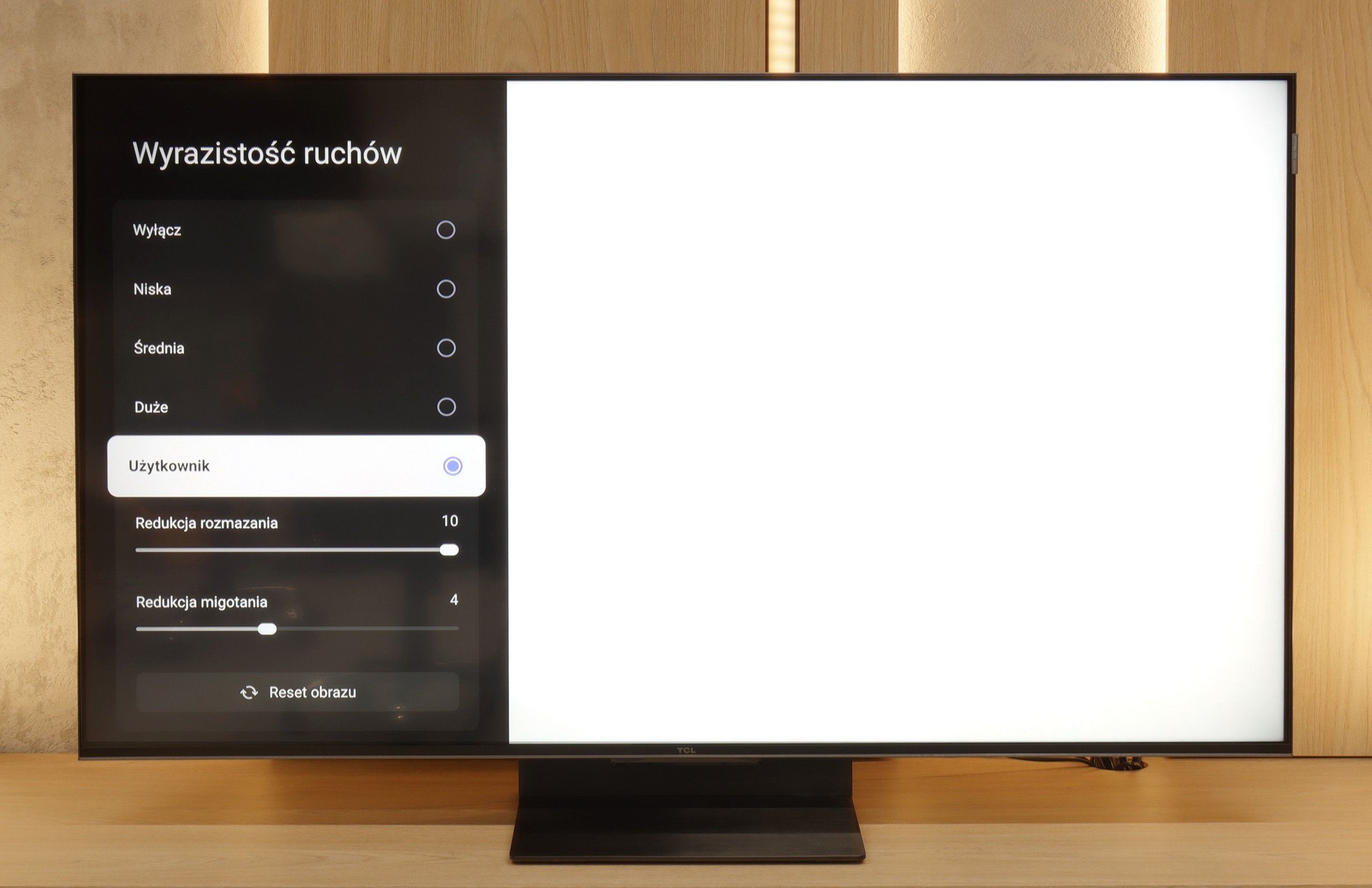
Blur (native resolution, maximum refresh rate):






Blur (BFI function enabled):



Smużenie ():
Smużenie (4K 144Hz):



Philips OLED769 features a multi-level motion smoother called "Motion Style," which will please users who value the ability to adjust motion fluidity in films. With this function, the image can be set to appear more stuttery or fluid, reminiscent of a theatrical effect. It's a great solution for those who want to tailor the displayed content to their visual preferences. Gamers will also not be disappointed, as the television, like most OLEDs, is equipped with a 120Hz panel. This ensures extraordinary fluidity and dynamic imagery. Unfortunately, Philips OLED769 does not have the BFI (Black Frame Insertion) feature, which could further enhance the smoothness and clarity of motion. Despite this limitation, the television still offers excellent visual experiences for both cinema lovers and gamers. This is definitely one of its strong points.
TCL C7K handles motion fluidity really well. The panel it uses offers a refresh rate of 144 Hz, which suggests that this TV is more than just a standard "60 Hz" panel. Furthermore, if we connect the C7K to a computer and set the resolution to Full HD. But we will write more about this in the paragraph on gamers and PC compatibility. Returning to everyday use – both sports and movies look very good here. Thanks to the fast panel and the well-functioning motion smoother, the C7K is great for watching matches, but also for movie screenings. In the menu, we find two sliders – motion blur reduction and flicker reduction – that allow you to adjust the fluidity effect to your own preferences. At lower settings, we get a more cinematic effect, with slight judder. At higher settings – the image becomes more theatrical, fluid to the point of excess. Whatever your preference – everyone can set it their own way.
Console compatibility and gaming features
10/10
9.8/10
- ALLM
- VRR
- VRR range40 - 120Hz48 - 144Hz
- Dolby Vision Game Mode
- Correct implementation of HGIG
- 1080p@120Hz
- 1440p@120Hz
- 4K@120Hz
- Game bar

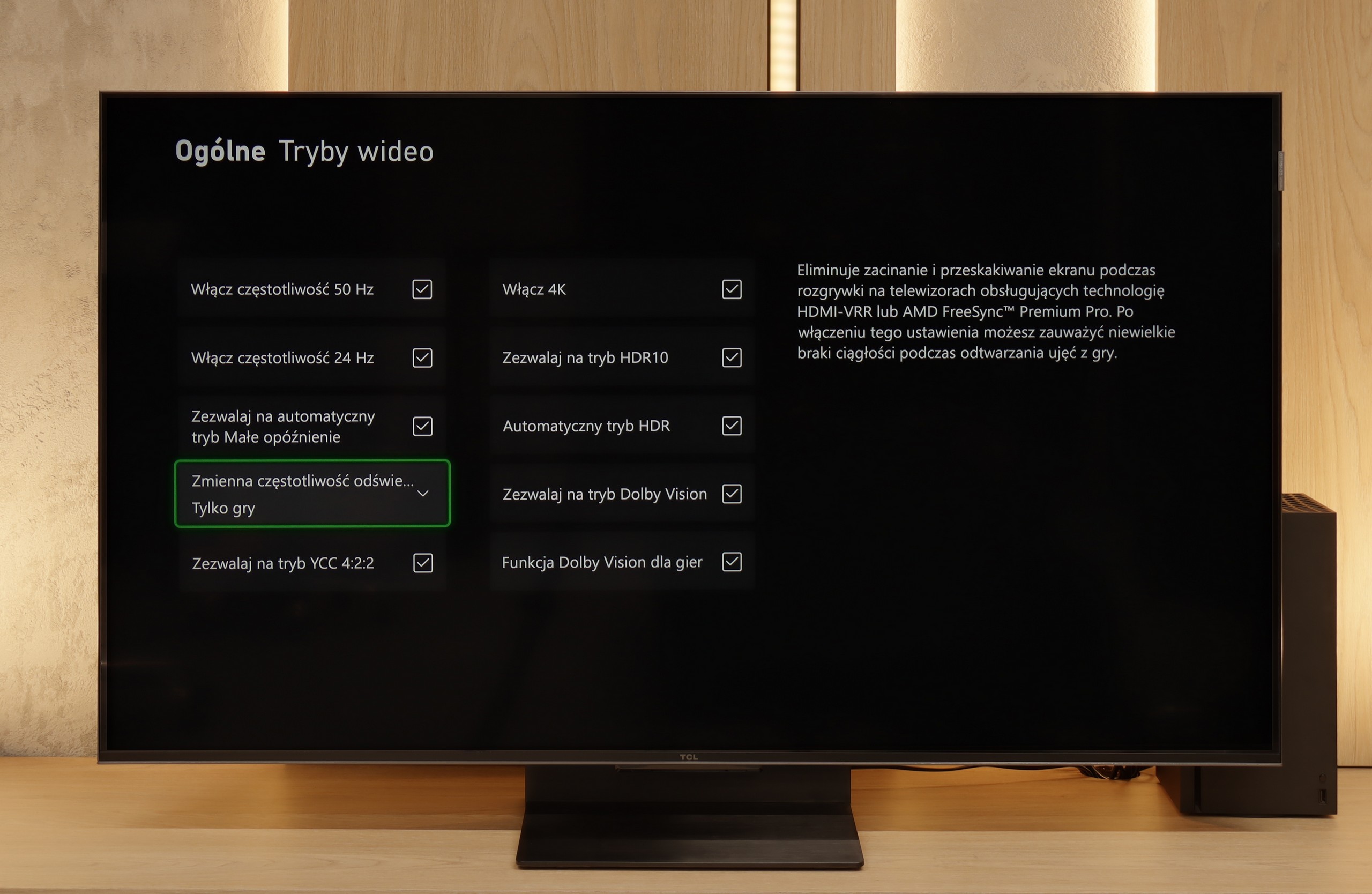

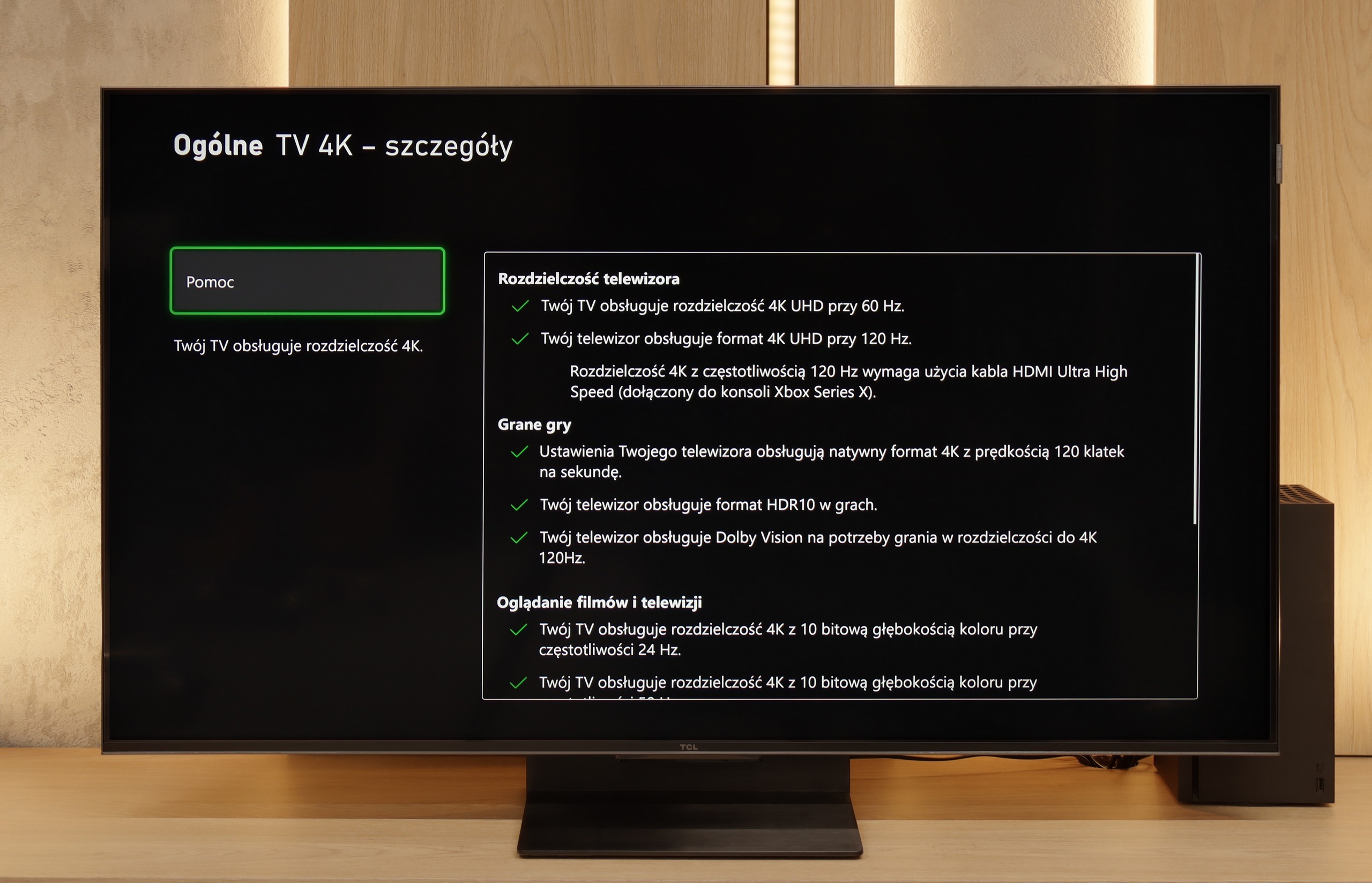

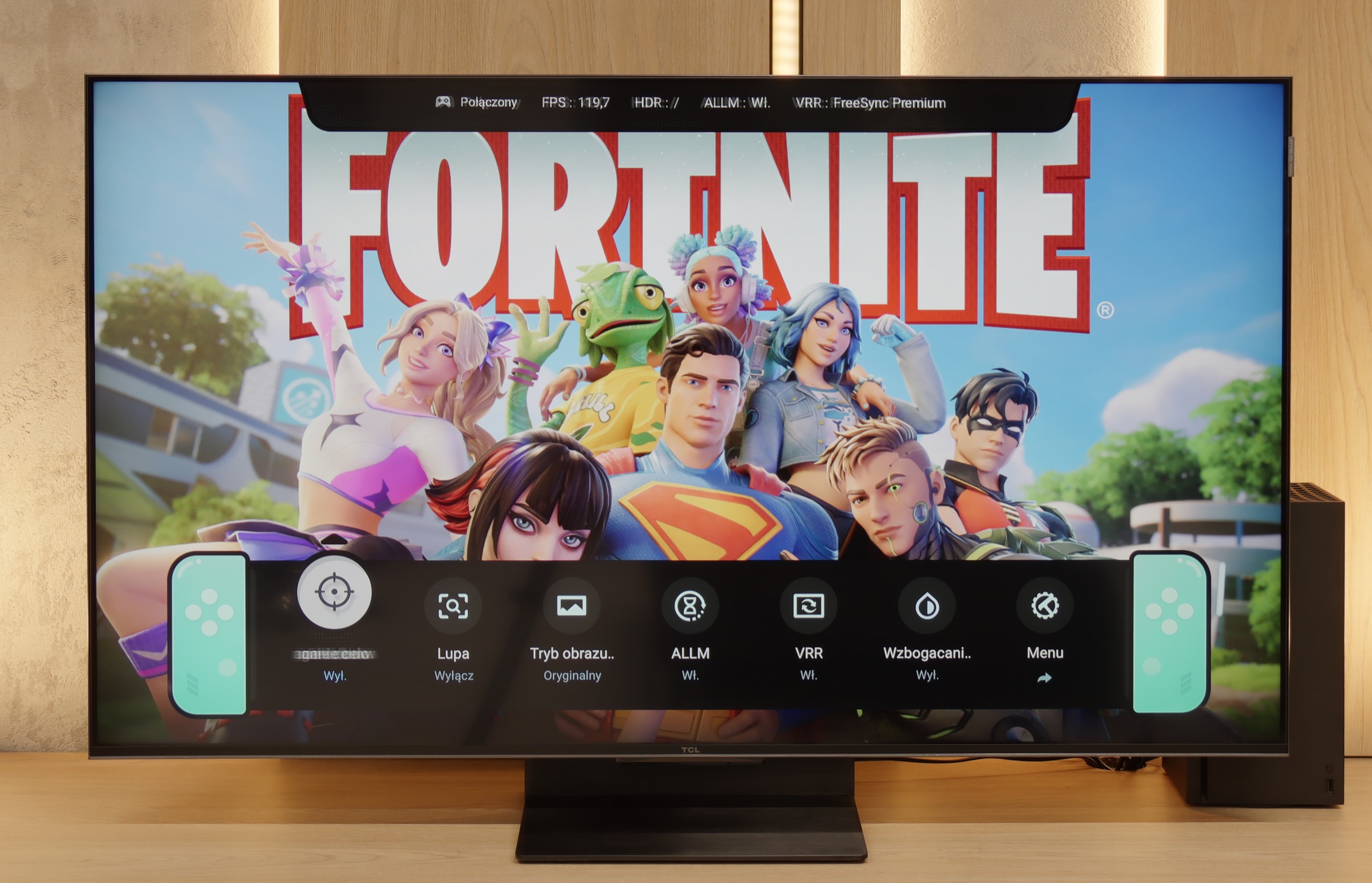

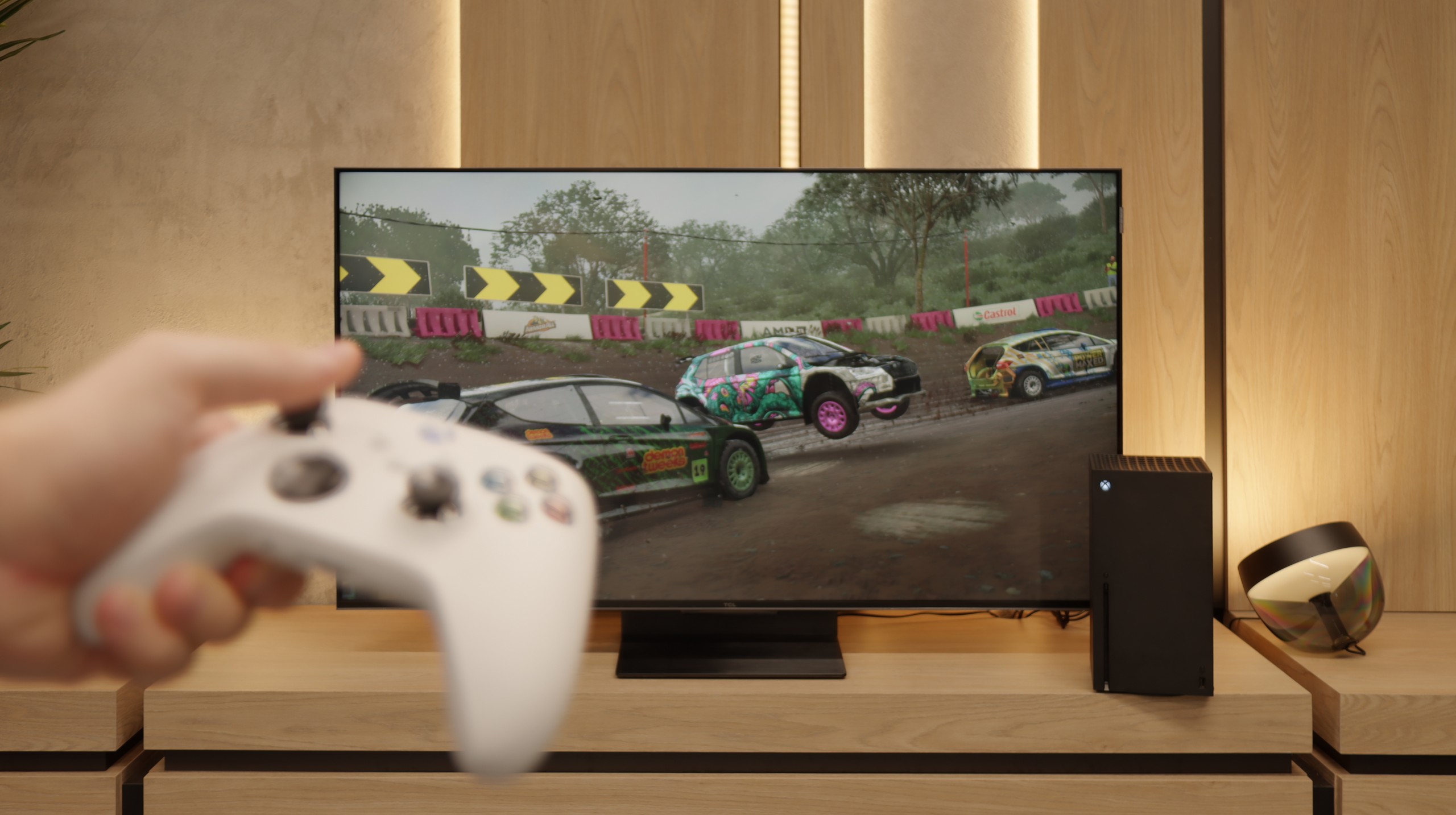
Philips OLED769 has been designed with gamers in mind, offering full compatibility with consoles and the highest quality gameplay. The television received the maximum rating in this category, providing everything your heart desires. With HDMI 2.1 ports fully supporting ALLM (Auto Low Latency Mode) and VRR (Variable Refresh Rate), the TV ensures smooth and hassle-free gaming. ALLM automatically switches the television to low latency mode, and VRR eliminates stuttering and screen tearing, resulting in smoothness and stability in gameplay. The Dolby Vision feature for gamers is another advantage, although it only works at 60 Hz. Most casual gamers will probably not feel the lack of a higher refresh rate, however, more demanding users may have some reservations. It allows for enjoying a dynamic range of tones and realistic images, enhancing the gaming experience. PC gamers will also not be disappointed, as the Philips OLED769 offers full compatibility with Nvidia graphics cards, thanks to support for G-Sync. This technology synchronizes the TV's refresh rate with the graphics card, eliminating tearing and stuttering, leading to excellent image smoothness.
Philips OLED769 is a television that perfectly meets the needs of gamers, offering a wide range of advanced features and technologies that significantly enhance game quality and user comfort.
TCL C7K is a television that on paper looks like the perfect equipment for gamers – and most importantly, it performs well in practice too. Here's some good news: we have two full-bandwidth HDMI 2.1 ports, so we can easily connect both a console and a computer, using all their capabilities. The panel itself supports a refresh rate of 144 Hz, which provides a significant advantage in dynamic games. Additionally, it comes with a full set of gaming features: VRR (variable refresh rate), ALLM (automatic low latency mode), and support for Dolby Vision in games. There's also an HGiG mode that allows for HDR effects that align with the creators' intentions. GameBar, which is an information bar for gamers. It operates quickly, looks clear (like a Nintendo console👌), and shows what's most important: the current frame rate, VRR status, and even HDR parameters.
Input lag
9.8/10
9.7/10
SDR
HDR
Dolby Vision
The input lag of the Philips OLED769 is impressively low. At a refresh rate of 120Hz, values hovering around 5 ms are truly impressive, and at 60Hz, 13 ms is also an excellent result. Such low latencies provide a quick response to player movements, which is crucial for smooth and responsive gameplay. The only downside is the lack of support for Dolby Vision with content/games at a 120Hz refresh rate. Nevertheless, the TV still offers incredible visual experiences and excellent specifications that will satisfy any gamer.
When it comes to delays, the C7K gives no reasons to complain. In games at 120 Hz, the input lag is around 10 ms, which means that the TV responds really quickly. Interestingly, even in Dolby Vision mode, the result is very similar, which isn't always the case. Good job, TCL. At 60 Hz, the lag does increase a bit, but that's completely normal and applies to pretty much every TV with a refresh rate of 120Hz and above. The most important thing is that everything still runs smoothly and there's no feeling that something isn't responding to our actions.
Compatibility with PC
7.6/10
8.4/10

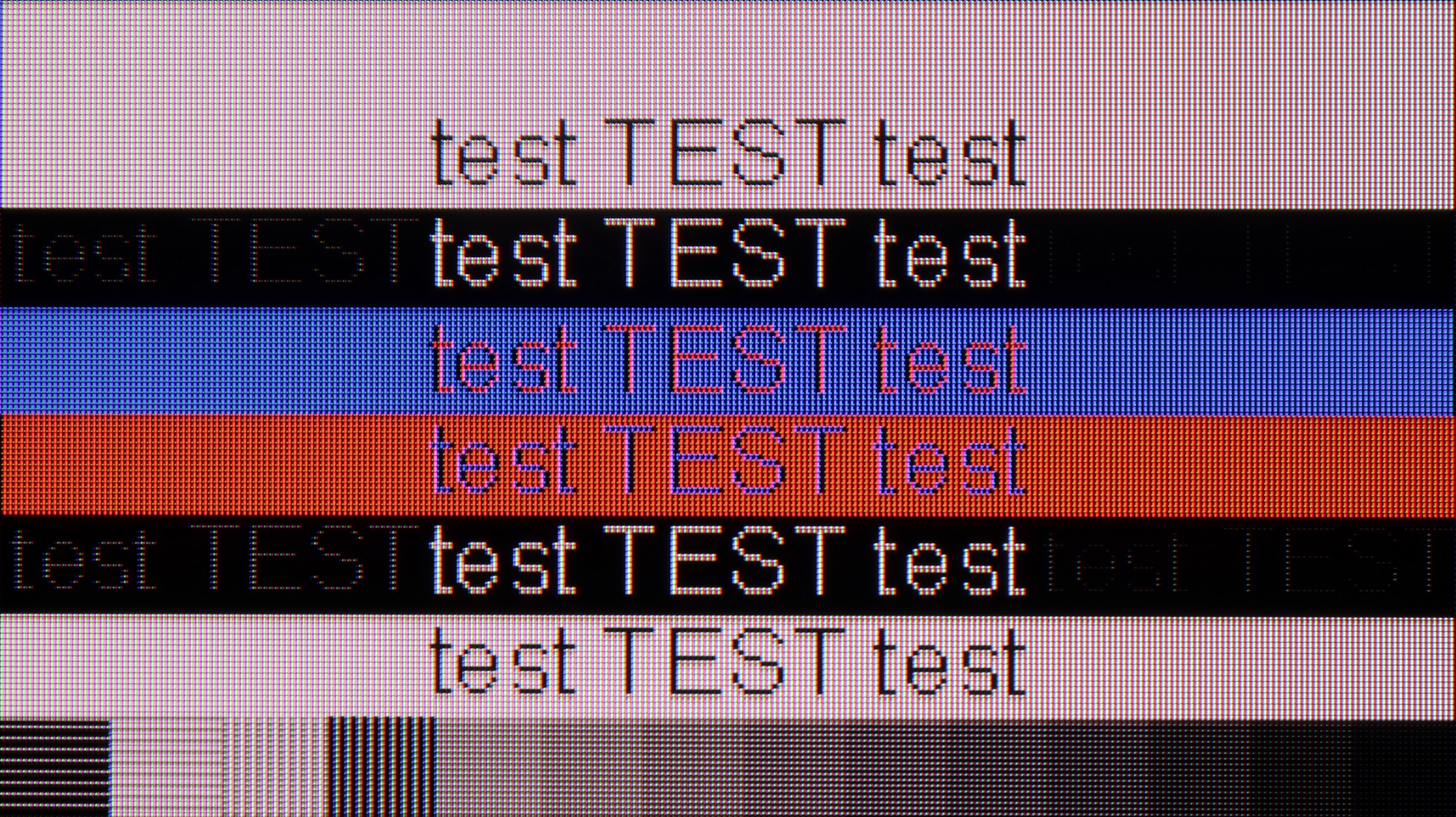
OLED769 works perfectly with PC computers. The rating in this category is very good, mainly due to the excellent readability of fonts, regardless of the background colour. The support for chroma 4:4:4 further enhances the image quality, providing clear and sharp details. The low response time is another advantage of this model, translating into smoothness and responsiveness during work and gaming. All of this makes the Philips OLED769 an ideal choice for PC users looking for a large screen with high image quality and excellent parameters.
If we plan to connect the C7K to a computer – especially for gaming – there's definitely a lot to play with. We have 4K at 144 Hz, which already sounds great, but if we drop the resolution, the TV can even display 280 Hz. In e-sports, where every split second counts, this really makes a difference. On top of that, it supports G-Sync and FreeSync, so no matter what graphics card we have – the image will be smooth, with no stuttering or tearing.
But if we plan to put the C7K on a desk and use it like a monitor, it's a bit less "rosy." Sure, it supports chroma 4:4:4, so fonts should be sharp, but with very dark letters, you can notice slight blurriness and edge dimming. It's not something that immediately stands out during gaming or watching, but when working with text – it can be distracting. In everyday use – relatively worry-free, but if we plan to have a 50-inch screen a metre from our face, it's worth keeping this in mind.
Viewing angles
7.5/10
3/10
When it comes to viewing angles, Philips OLED769 performs exceptionally well, as is the case with all OLED TVs. The picture remains sharp and does not lose quality, regardless of the viewing angle. This means you can enjoy excellent picture quality, even when watching from the side or from more unconventional spots in the room. The only TVs that offer even better viewing angles are those equipped with QD-OLED and OLED MLA panels. These technologies can provide even greater stability and clarity of the image at various angles. However, compared to standard LCD TVs, Philips OLED769 still offers significantly better viewing angles, making it a great choice for large rooms and family movie nights.
There's no surprise here – the C7K has classic viewing angles for a VA panel. That is: we sit directly in front – it's excellent. Colours look good, contrast is strong, everything is in place. But just shifting slightly to the side starts to make things worse – the image loses saturation, the blacks turn grey, and the overall impression diminishes a bit. So if we plan to watch together with a few people or have a sofa that takes up half the lounge – it’s worth seating everyone more centrally. You can watch from the side, but don’t expect miracles – it’s simply a characteristic of the VA panel.
TV efficiency during daytime
4.6/10
6.1/10




Matrix brightness
Average luminance SDR
TCL C7K / QM7K: 475 cd/m2
Philips OLED769: 258 cd/m2
The performance of the Philips OLED769 TV during the day leaves a bit to be desired. The panel, despite being satin, reasonably suppresses reflections, which can be noticeable in bright rooms. The low rating is primarily due to the fairly mediocre brightness of the TV—250 nits is unimpressive and may not be sufficient to provide adequate image quality in strong daylight. This means watching on sunny days can be less comfortable, and image details may be harder to see.
Luckily, the TCL C7K performs quite well in bright rooms. The applied panel has a satin finish that effectively reduces reflections, so even on sunny days we don't have to worry about reflections from lamps or windows. Importantly, the colours maintain their intensity and don't wash out, as can happen with weaker matte panels. As for brightness, the average for content like YouTube or regular television reaches just below 500 nits. It's not a record result – for example, the MQLED85 (C765) performs better in this regard. However, for everyday viewing during the day, it should work without major issues, as long as we don't plan to place it opposite a south-facing window without curtains.
Details about the matrix
Subpixel Structure:

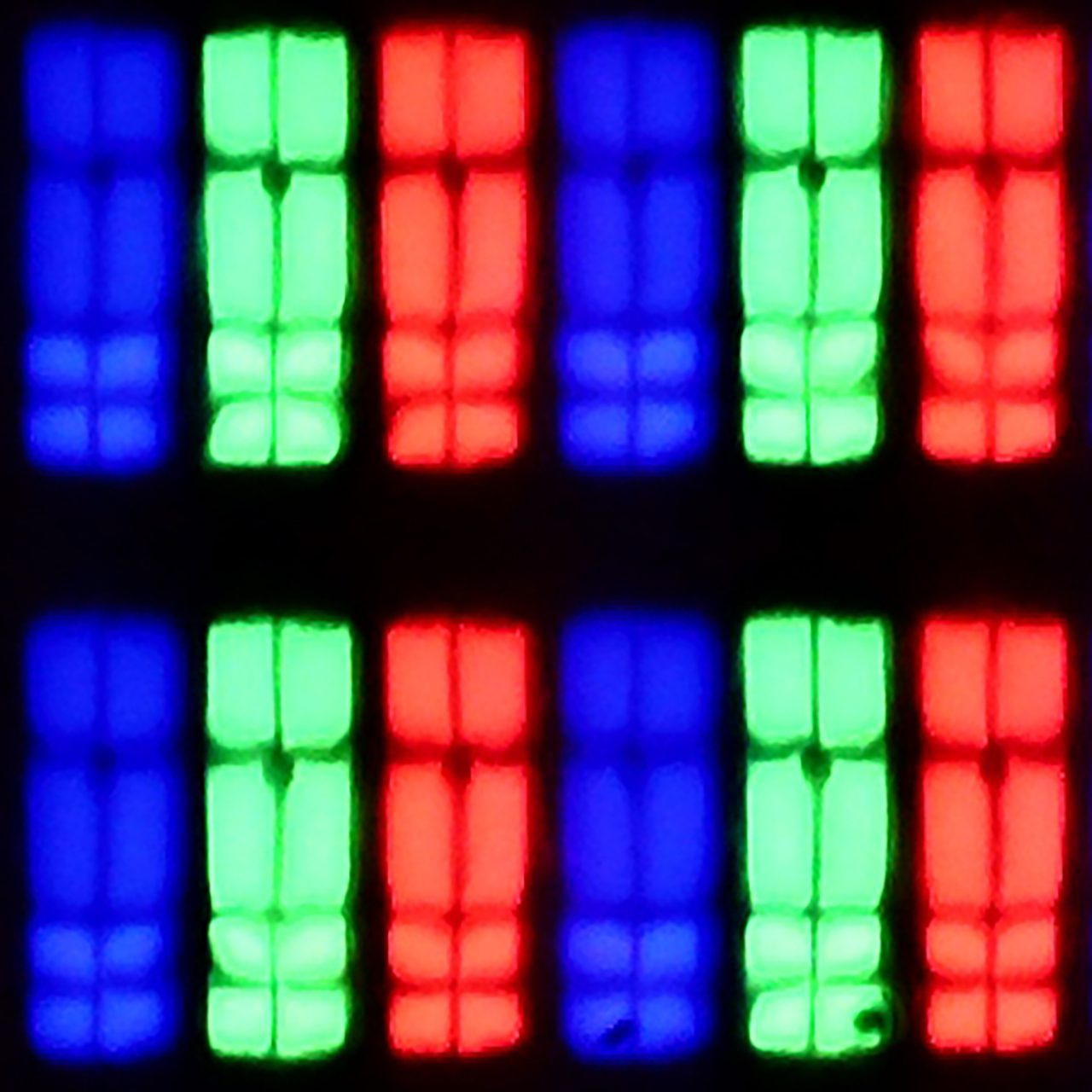
Panel uniformity:


Philips OLED769
TCL C7K / QM7K
TV features
5.5/10
7.7/10
- HDMI inputs0 x HDMI 2.0, 4 x HDMI 2.1 48Gbps2 x HDMI 2.0, 2 x HDMI 2.1 48Gbps
- OutputsToslink (Optical audio), eARC (HDMI), ARC (HDMI), Mini-Jack (Headphones)Toslink (Optical audio), eARC (HDMI), ARC (HDMI)
- Network InterfacesWi-Fi 2.4GHz, Wi-Fi 5GHz, Ethernet (LAN) 100MbpsWi-Fi 2.4GHz, Wi-Fi 5GHz, Ethernet (LAN) 100Mbps
- TV receptionDVB-T, DVB-T2, DVB-S, DVB-S2, DVB-CDVB-T, DVB-T2, DVB-S, DVB-S2, DVB-C
Classic features:
- Recording to USB (terrestrial TV)
- Recording programming
- Picture in Picture (PiP)
- RF remote control (no need to aim at the screen)
- Backlit remote control
- Teletext
- Audio only mode
- Possibility to connect Bluetooth headphones to the TV
- Possibility to simultaneously use Bluetooth headphones and the TV speaker
Smart features:
- AirPlay
- Screen mirroring (Windows Miracast)
- Wyszukiwanie głosowe
- Voice search in native language
- Ability to connect a keyboard and mouse

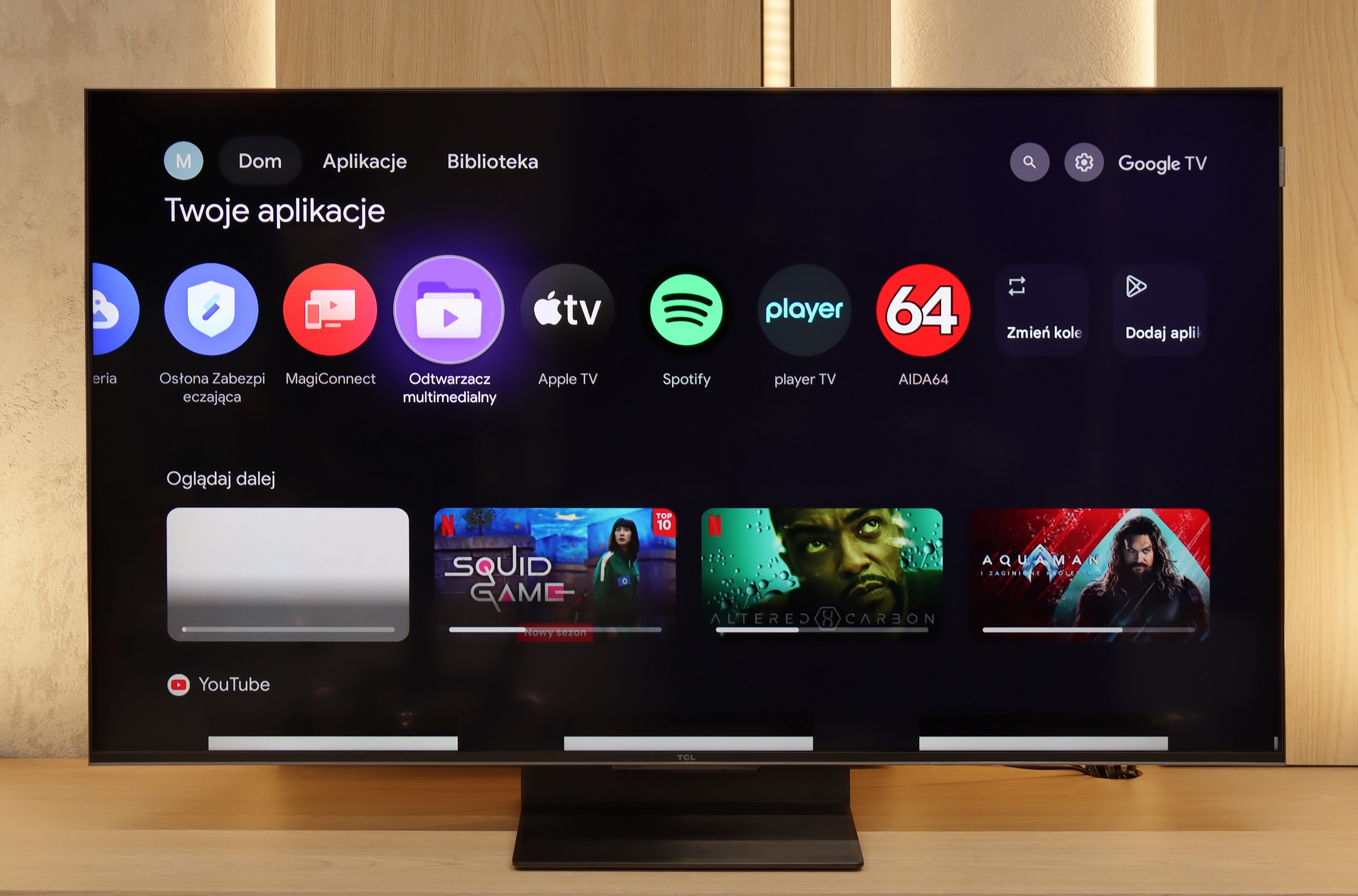
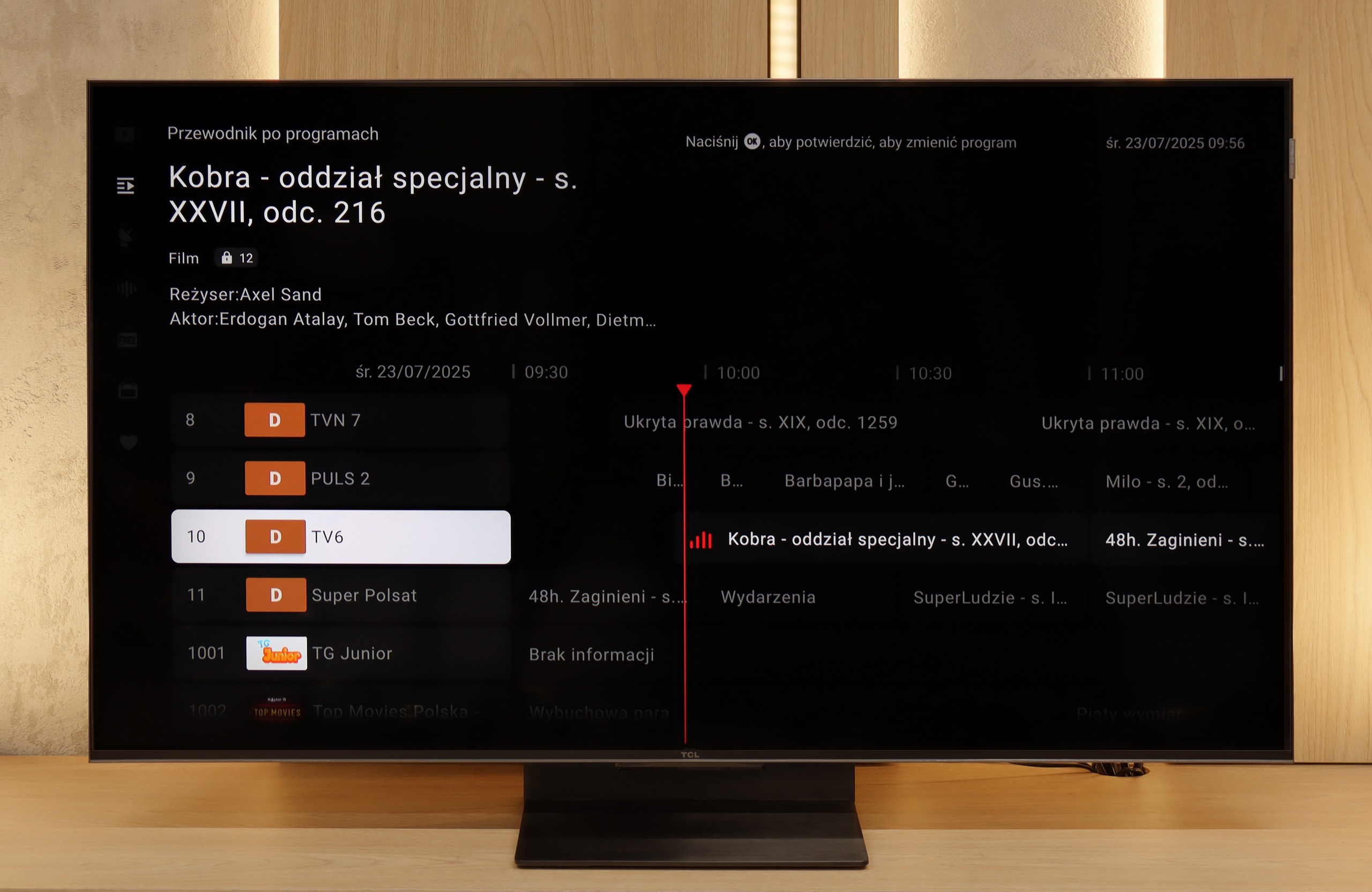
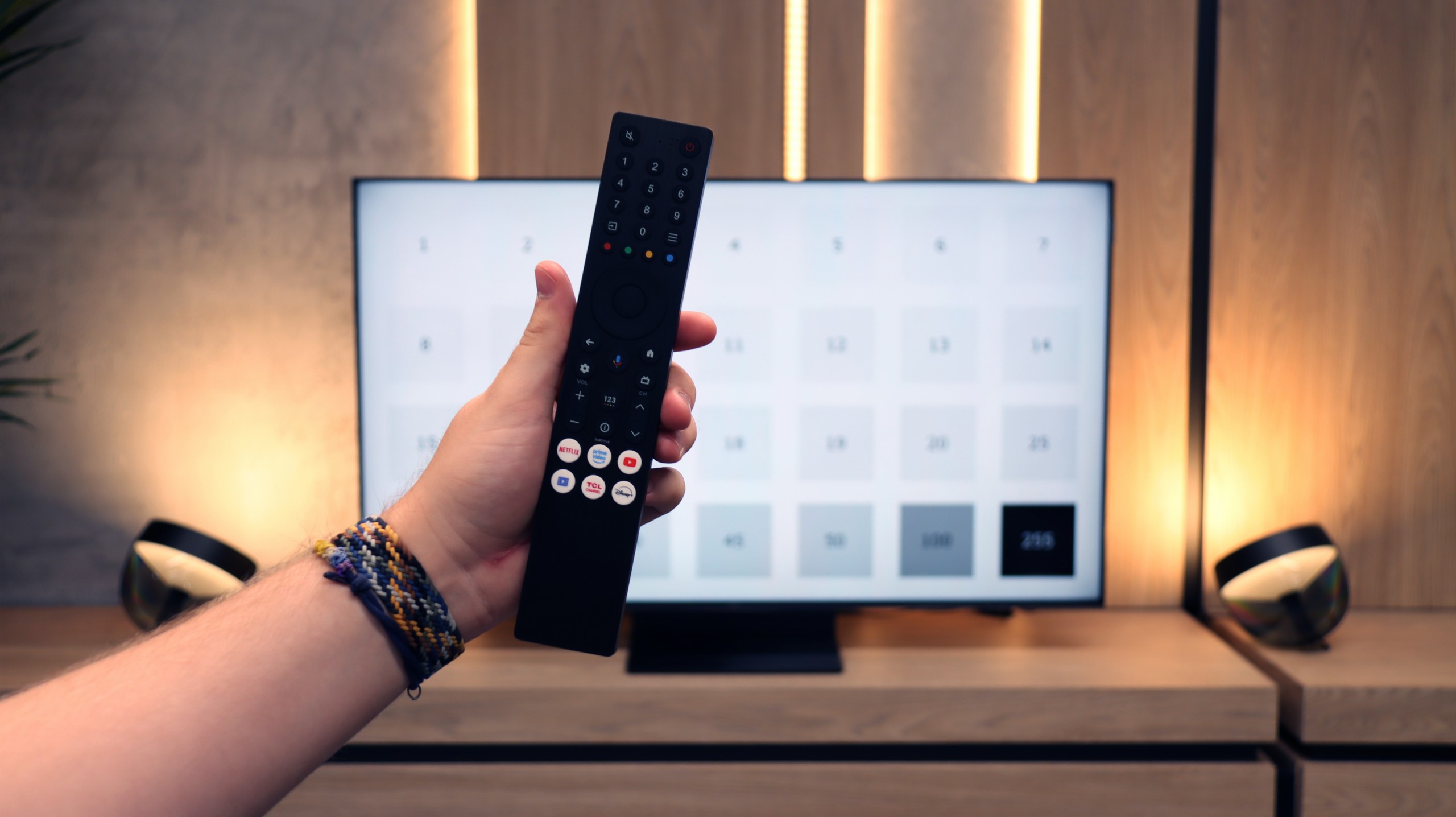
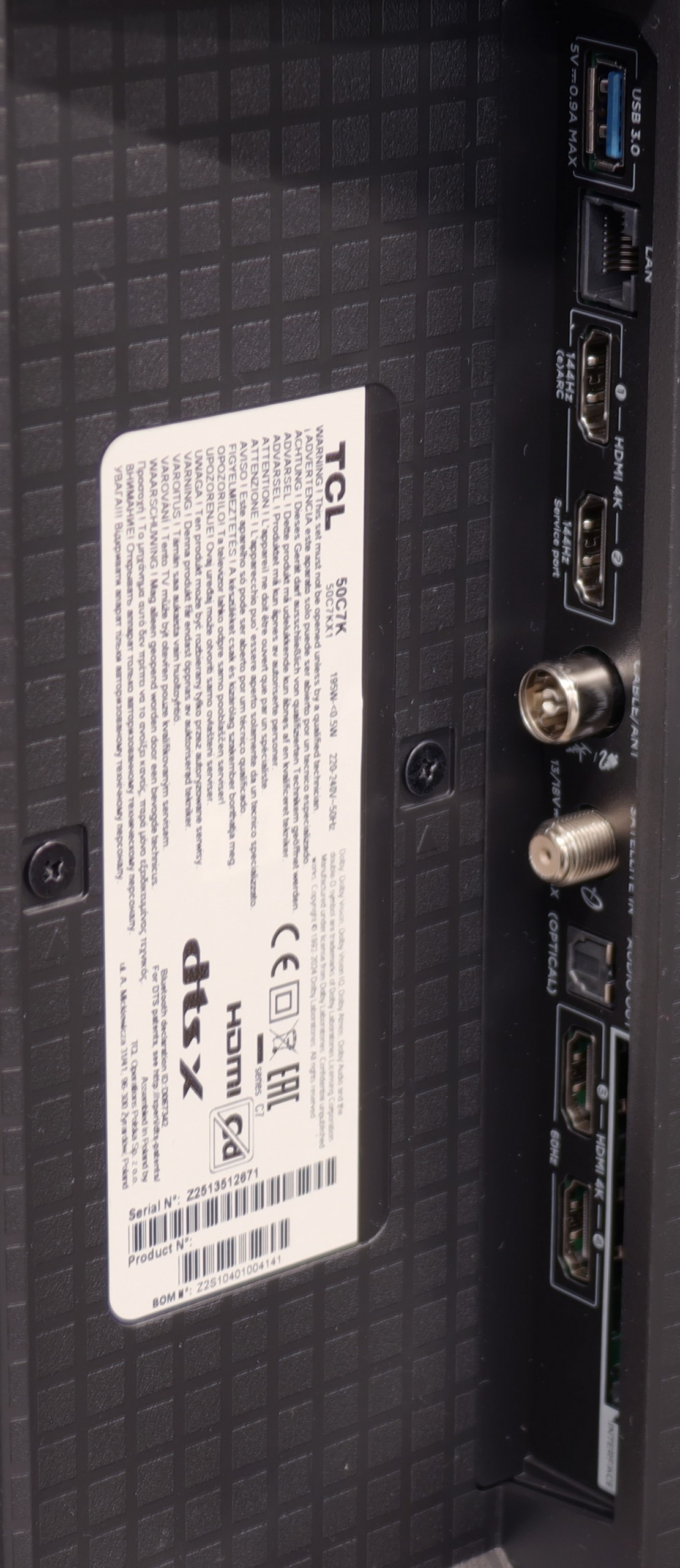
The biggest advantage of the Philips OLED769 television is undoubtedly the three-sided Ambilight system. This technology really makes a difference by extending the screen onto the walls around the TV and creating the illusion of a larger screen. It not only enhances the visual experience but also adds a unique atmosphere, whether we are watching a movie, playing games, or using other multimedia.
Interestingly, there is a new remote included with TVs featuring the TitanOS system. Thanks to its backlighting, it is very convenient to use; however, its wireless nature leaves something to be desired. The hybrid design means that sometimes you have to aim at the TV screen, while other times you don’t – depending on the button being used, which can be a bit annoying.
In the context of the operating system, Philips has introduced a new strategy for this year, replacing the previous open GoogleTV system with its own proprietary TitanOS. As with new technologies, TitanOS has its teething problems. It currently offers only a few basic applications, and the app store doesn't impress with its variety. This may disappoint some users who expect a wide range of available applications. Furthermore, the lack of support for AirPlay and the ability to record to USB are additional limitations that may be problematic.
SmartTV: GoogleTV
The biggest strength of the TCL C7K in everyday use is undoubtedly the Google TV system. It is thanks to this that we have access to an almost endless library of applications, including some more niche ones that are often unavailable on other platforms. The built-in Google Assistant understands Polish, so we can easily ask what is on TV, what the weather is like, and even give a few voice commands to control the television. The presence of Chromecast and AirPlay, which work smoothly and make life easier, is also a plus.
Usability Features
However, the traditional functions are a bit lacking. Of course, we have the basics – teletext, EPG, or the ability to connect headphones – but that’s pretty much where it ends. There's a lack of USB recording features or picture-in-picture (PiP) mode, which can still be found among competitors. It's also worth remembering that Google TV in the TCL version sometimes has strangely translated menu sections or minor interface errors. These aren’t issues that hinder daily use, but detail-oriented individuals may notice them.
Playing files from USB
8.2/10
9.2/10
Supported photo formats:
Maximum photo resolution:


The built-in player in Philips OLED769 generally performs well. Although it may lack support for non-standard formats, which could be an issue for specific users, most should be satisfied with the available options. The built-in player in the TitanOS system allows for the reading of Polish characters and changing the font colour, which additionally makes everyday usage easier. Thanks to these features, playing files from USB is comfortable and versatile.
The built-in file player in the TCL C7K performs really well. It supports most popular audio and video formats, so if we want to quickly plug in something from a USB drive and get it going – there shouldn't be any problem. Of course, as is often the case, you can find some minor shortcomings – not every exotic codec will work (Apple's HEIC), not all subtitles will be perfectly synchronised (txt.). However, the biggest advantage of this television comes to the rescue, which is Google TV. With access to the Google Play Store, we can easily install an alternative player, such as VLC, and then no files will frighten us.
Apps
6.2/10
9.6/10














































Sound
6.7/10
7/10
- Subjective sound quality:6.7/107/10
- Dolby Digital Plus 7.1:
- Dolby True HD 7.1:
- Dolby Atmos in Dolby Digital Plus (JOC):
- Dolby Atmos in Dolby True HD:
- DTS:X in DTS-HD MA:
- DTS-HD Master Audio:
In the sound category, Philips OLED769 may not offer super dynamic sound, using 2x10W speakers. However, it is worth noting the support for all Dolby and DTS audio formats. This allows users to enjoy high-quality sound with the help of external players, despite the power limitations.
To be honest, we didn't expect much from the sound of the 50-inch version of the C7K model. Usually, in such sizes, it's hard to find anything more than thin, flat sound. But here – a pleasant surprise. The sound turned out to be really enjoyable, with good clarity and even a subtly noticeable bass. This is probably linked to TCL's new collaboration with the Bang & Olufsen brand, which is a novelty for 2025. Whether the C7K actually contains original drivers from the Danish premium brand – we can't confirm that. But the end result still deserves a thumbs up. For a TV without a soundbar – it sounds quite nice.


